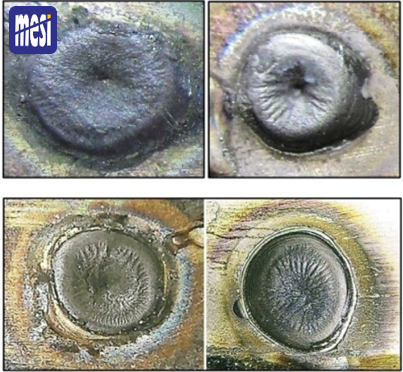Emphasis of Weld Time, Shielding Gas and Oxygen Content in Activated Fluxes on the Weldment Microstructure
Main Article Content
Abstract
The activated-TIG (A-TIG) process is a recognised process for achieving higher depth-of- penetration (DoP) and it could be used for various stainless-steel grades welding. The oxygen content of oxide based activated fluxes provide the extra heat during decomposition of flux and result into deep penetration. This study reveals the effect of short weld time of 2 sec in stationary arc, shielding environment (Ar and Ar + 2.5 % H2) and an effect of oxygen element in activated flux (CrO3 and SiO2) on the microstructure and weld metal micro-hardness. Use of hydrogen mix shielding gas during A-TIG process has significant impact on the dilution rate, grain size and dendrite arm spacing. The fraction of oxygen in the flux and the presence of silicon in SiO2 flux play a significant role in achieving higher DoP. To evaluate the impact of different shielding environment on grain growth, the samples were investigated with weld pool morphology, depth of penetration, weld chemistry, optical microscopy and SEM analysis. The extra heat produced due to oxygen fraction in activated flux and H2 induced shielding have been quantified in the study. The ferrite and austenite grain growth as well as the dendrite arm spacing found to be increased due to presence of H2 in shielding gas.
Downloads
Article Details

This work is licensed under a Creative Commons Attribution-NonCommercial 4.0 International License.

